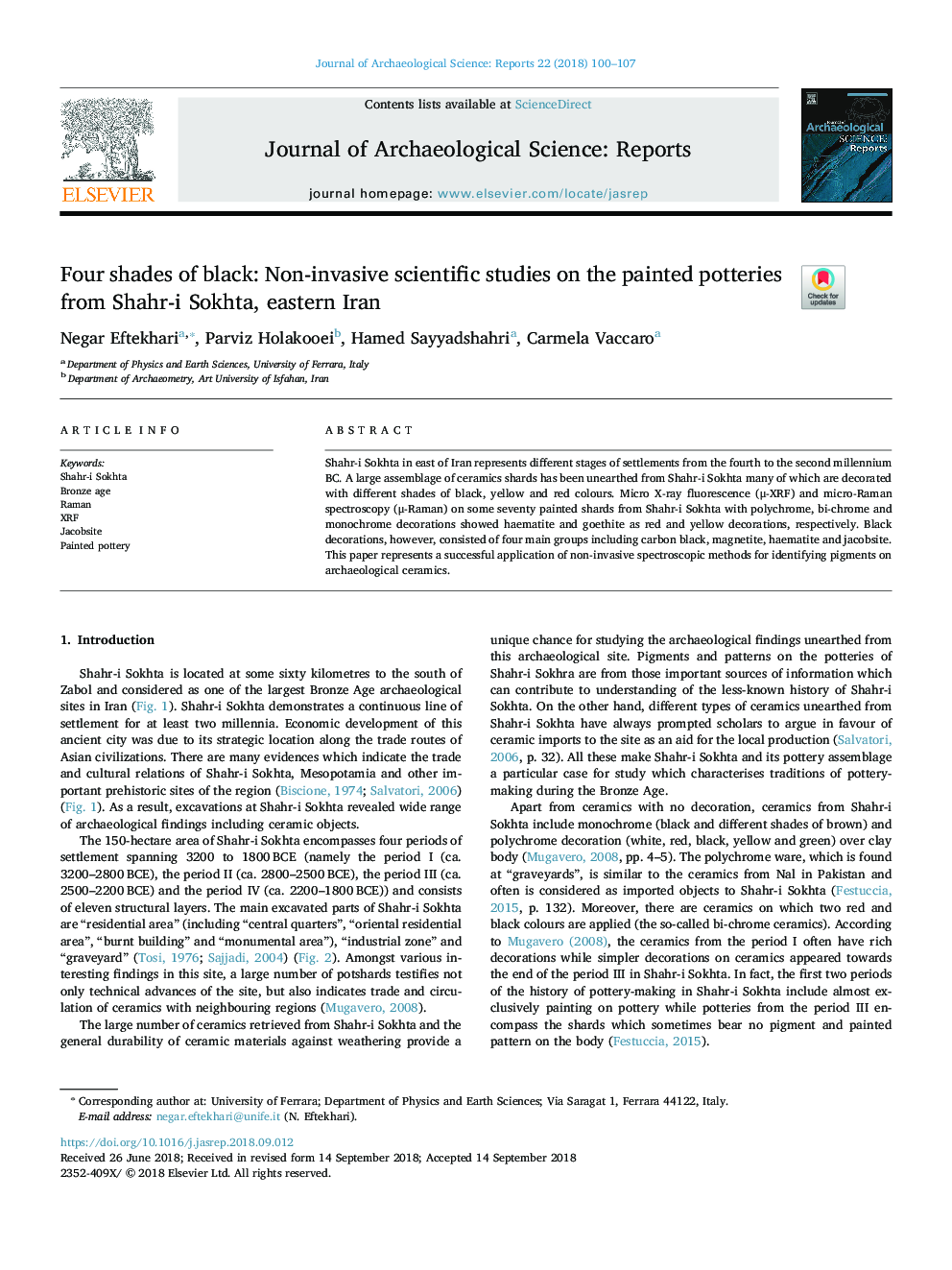| Article ID | Journal | Published Year | Pages | File Type |
|---|---|---|---|---|
| 11027548 | Journal of Archaeological Science: Reports | 2018 | 8 Pages |
Abstract
Shahr-i Sokhta in east of Iran represents different stages of settlements from the fourth to the second millennium BC. A large assemblage of ceramics shards has been unearthed from Shahr-i Sokhta many of which are decorated with different shades of black, yellow and red colours. Micro X-ray fluorescence (μ-XRF) and micro-Raman spectroscopy (μ-Raman) on some seventy painted shards from Shahr-i Sokhta with polychrome, bi-chrome and monochrome decorations showed haematite and goethite as red and yellow decorations, respectively. Black decorations, however, consisted of four main groups including carbon black, magnetite, haematite and jacobsite. This paper represents a successful application of non-invasive spectroscopic methods for identifying pigments on archaeological ceramics.
Keywords
Related Topics
Social Sciences and Humanities
Arts and Humanities
History
Authors
Negar Eftekhari, Parviz Holakooei, Hamed Sayyadshahri, Carmela Vaccaro,
